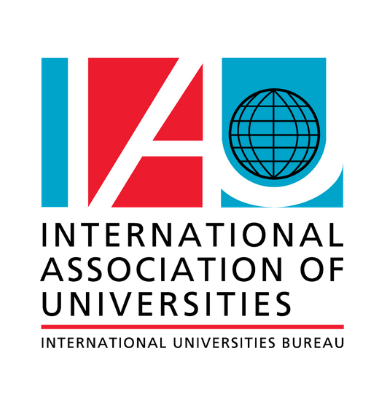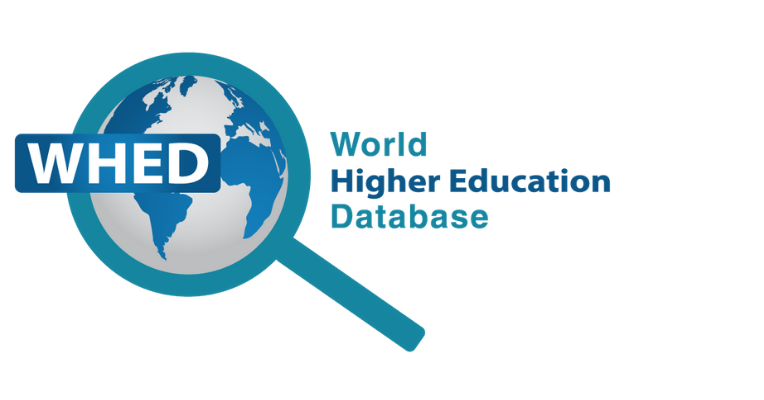About
1. WHAT IS WHED?
Globally recognized as a reliable source of information, the WHED provides information on around 21,000 higher education institutions (HEIs) in 190 countries and territories. In addition, the IAU WHED portal also disseminates information on the higher education systems and credentials of these countries.
Since 1950 and in collaboration with UNESCO, the WHED is recognized as an official source of information on HEIs by national higher education authorities, governmental agencies and/or national academic bodies at global level.
2. WHAT KIND OF INFORMATION IS IN THE WHED?
The WHED provides information on around 21,000 HEIs in 190 countries and territories.
Each country listed in the database is divided into two sections:
1. education system and credentials;
2. higher education institutions.
A. Education system and credentials
The WHED provides a fact sheet describing the structure of each country’s higher education system and credentials.
It is comprised of information on:
- the different types of higher education institutions available in the country;
- the overall structure of the pre-higher and higher education system (including the different stages of study);
- the national bodies responsible for higher education (including associations and organisations located within the country);
- admission requirements (including for foreign students);
- the quality assurance and recognition systems;
- student life;
- the main credentials.
B. Higher education institutions (HEIs)
This section is divided into 5 sections.
1. General Information
The WHED provides the following information:
- Global WHED ID: a unique identifier for each higher education institution registered in the WHED;
- institution name in English, followed by the name in native language, where appropriate;
- contact details: address, website;
- institution funding: public, private, private for-profit;
- year of creation;
- information on academic year, admission requirements;
- language of instruction;
- name of the national competent accrediting body.
Campuses and branches when they appear in the WHED are linked to the main institution.
2. Officers
For principal officers (head, senior administrative officer and international relations officer) name and position.
3. Divisions
Academic divisions (faculties, colleges, departments, schools, institutes etc.) and fields of study are indicated when available.
4. Degrees
Degrees and diplomas offered at each level of study, along with fields of study when available.
3. WHO PROVIDES THE INFORMATION?
Information on education systems, credentials and institutions is based upon data provided by national competent bodies, including the ENIC-NARIC (European Network of Information Centres - National Academic Recognition Information Centres) Networks. Information is also sought on official websites of the various national competent bodies.
For each education system, the source of information is indicated at the end of the information sheet, as well as the year the information was last updated.
For each higher education institution:
- a questionnaire is sent to each institution, using the contacts in the WHED, and inviting them to check and update their institutional data;
- the date of the latest update is given at the bottom of each entry.
4. HOW IS THE INFORMATION PROCESSED?
The IAU/UNESCO Information Centre updates the database in collaboration with UNESCO on an ongoing basis focusing each year on one specific region or geographic area. It also provides monthly updates on IAU Members, ad hoc updates received from institutions, and regular updates on national higher education systems and bodies.
The IAU/UNESCO Information Centre follows the conditions mentioned in points 5 and 6 before integrating a higher education institution.
Questionnaires are then sent to those degree-granting institutions offering at least a 4-year degree or a 4-year professional diploma to obtain more detailed information.
The information concerning countries/institutions listed in the WHED is assembled with the greatest care. However, IAU cannot be held responsible for the consequences of errors or incomplete information in country/institution data. The collection of data involves working on documents in many languages, covering a wide range of continuously-evolving systems of higher education. Every effort is made to ensure that the entries are as comprehensive as possible and that the information is accurate.
5. WHAT IS THE CONDITION FOR A COUNTRY TO BE LISTED IN THE WHED?
| Be a Member State or be an Associate Member listed by UNESCO |
The designations employed for countries and territories are those in use in the United Nations system and do not imply any expression of opinion with regard to their status or the delimitations of their frontiers.
Specificities of certain countries:
- Belgium is treated as two entities:
- French-speaking Belgium;
- Flemish-speaking Belgium.
- Canada provides a general overview of the education system and degrees, and a detailed breakdown of the 10 provinces and 3 territories, each one having its own education system.
- The United States of America offers a general presentation of the educational system and credentials, and is then subdivided into a list of institutions in 50 states, plus Guam, the Virgin Islands and Puerto Rico. The section « Outside USA » lists HEIs located outside the United States, but which are accredited by a recognized accrediting body in the US.
- The Holy See is registered in the WHED as it is a granted permanent observer state status in the United Nations.
6. WHAT ARE THE CONDITIONS FOR AN HEI TO BE LISTED IN THE WHED?
Exemptions
|
Further information:
- An institution offering only a three-year university-level degree, which becomes a Member of IAU will be listed in the WHED; likewise, an institution which has not had three cohorts, but which successfully applies for IAU Observer Member status will also be listed in the WHED.
- Where there is insufficient information on an institution (no website, no contact details, no official information on its diplomas / degrees) then we are unable to create an entry in the WHED.
- Institutions that may have been recognized by their national competent body in the past, but are no longer recognized, are not listed in the WHED.
The IAU/UNESCO Information Centre thanks all bodies, the ENIC-NARIC Network, and higher education institutions, that have provided material.


